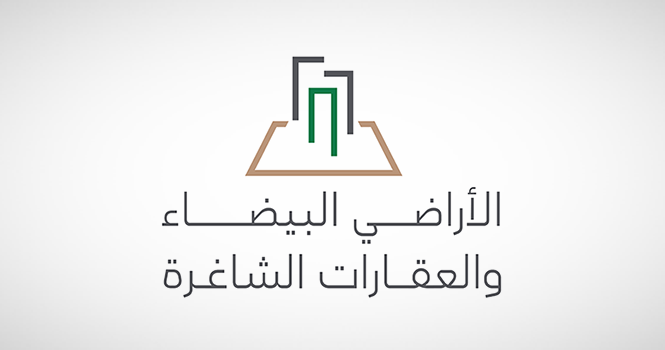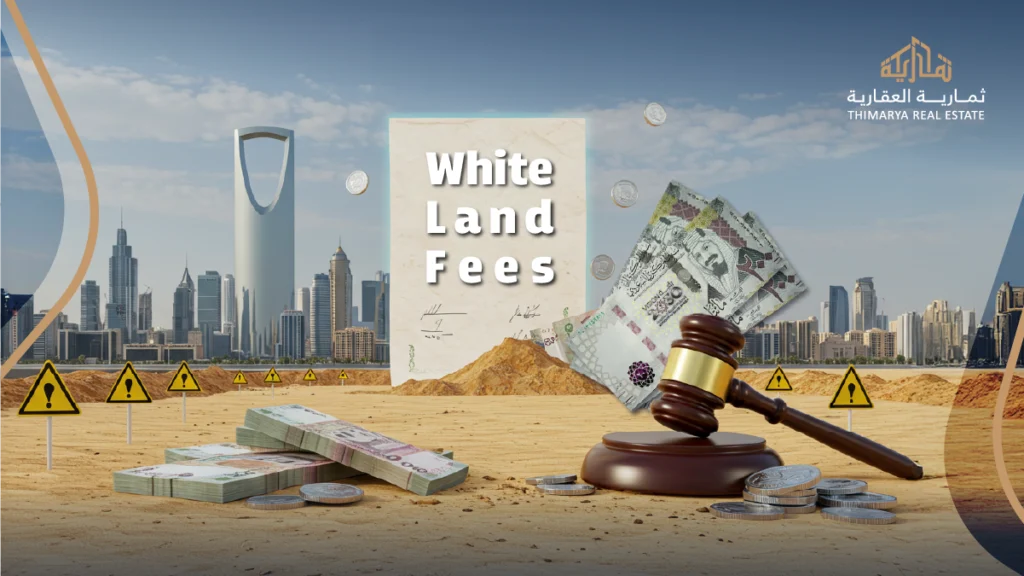The Ministry of Municipalities and Housing announced on August 27, 2023, an update to the white land fees system within urban boundaries, imposing annual rates ranging from 2.5% to 10% according to five geographical categories, with a requirement that the area of the land subject to fees must not be less than 5,000 square meters. The decision aims to combat land monopolization and encourage its development to increase housing supply and support the objectives of Saudi Vision 2030.
What are white lands?

Before we delve into the details of the decision, let us give you a quick overview of the vacant land.
White land refers to undeveloped land located within the urban boundaries of cities, meaning it has essential services such as roads, electricity, and water, but is still free of buildings or urban uses. The system specifically targets this land to limit its hoarding without development and to encourage its owners to invest in it or put it up for development, thereby increasing the efficiency of land use and boosting the housing supply.
Details of the New Decision
The Ministry of Municipalities and Housing has approved the details of the updated executive regulation for white land fees, where the urban areas have been divided into five geographical categories based on development priority. The annual fees range from 10% for the highest category to 2.5% for the lowest category, while lands located outside these areas are exempt. The decision also states that fees are imposed on lands with an area of 5,000 square meters or more, whether they are a single plot or a group owned by one owner within the area. The system allows owners to recover the fees or be exempt from them if the land is developed within the specified period, with the possibility of submitting exemption requests or appeals within a period not exceeding 60 days from the date of the official notification.
The geographical areas are subject to the decision on white land fees.

The neighborhoods included in the geographic areas for white land fees – Riyadh City
🟥 Slide One (10%) – Top Priority
- Al-Malqa
- Hittin
- Al-Narjis
- Al-Arid
- Al-Qayrawan
- Al-Yasmin
- Al-Ulya
🟧 Slide Two (7.5%) – High Priority
- Some neighborhoods are still partially mentioned in the sources, including areas near the north and center of Riyadh (the complete list has not yet been published in the newspapers, but it is available on the ministry’s interactive map).
🟩 Slide three (5%) – Medium priority
- Al-Mahdiyah
- Dhahra Labin
- Al-Rayan
- Al-Rawda
- Granada
- Al-Yarmouk
- Eastern Naseem
- Western Naseem
- Seville
- Al-Hamra
- Peace
🟦 Slide four (2.5%) – Low priority
- Some peripheral neighborhoods with lower population density are included (the ministry mentioned that they are available on the interactive map, but the full names have not yet been published in the press).
⬜ Slide five (Exemption) – Outside of priorities
- Land located outside the designated areas → no fees are imposed on it.
Developments in the White Land Fees System
The White Land Fees System was issued for the first time at the end of 2015 by royal decree, and the actual implementation of the fee decision began in 2016. It imposed a fixed fee of 2.5% of the land value on white lands located within urban boundaries that exceed an area of ten thousand square meters. The goal at that time was to stimulate development and limit the monopoly of unused lands.
Later, on April 29, 2025, the Council of Ministers approved an amendment to the system, raising the maximum fee to 10% and expanding the scope of application to also include vacant properties, while reducing the minimum area subject to fees to 5,000 square meters instead of 10,000. This amendment was officially published in the Umm al-Qura newspaper on May 12, 2025.
The most recent step came on August 27, 2025, when the Ministry of Municipal and Rural Affairs and Housing announced the determination of the geographical boundaries for the fees in the city of Riyadh according to five brackets, with annual rates ranging between 10% and 2.5%, while lands located outside those boundaries are exempt.
The goal of the decision was to update the white land fees.
The decision to update the white land fees system aims to enhance the efficiency of land use within urban boundaries and to curb monopolistic practices that hinder urban development. It also seeks to encourage landowners to develop their lands or offer them for investment, contributing to an increase in the supply of housing units and achieving balance in the real estate market. This supports the objectives of Saudi Arabia’s Vision 2030, which aims to raise the homeownership rate and enhance the quality of life.
The impact of updates on developers’ and investors’ decisions.
The recent update to the white land fees system is expected to bring about a qualitative shift in the decisions of real estate developers, investors, and companies operating in the sector. Instead of merely acquiring land and leaving it undeveloped, owners are now required to expedite the development of residential and commercial projects to avoid high fees that could reach up to 10% of the land’s value. This trend enhances the vitality of the real estate market, curbs unproductive speculation, and creates greater opportunities for real estate companies to launch new projects.
Additionally, the clarity of geographic ranges and fee percentages raises the level of transparency and regulation in the market, making the investment environment more attractive to both local and foreign investors seeking legislative stability and long-term guarantees. Thus, the system transforms into an incentive tool to support actual urban development and enhance investor confidence in the Saudi real estate sector.
The impact of the decision on the real estate market and citizens.
The new decision is expected to increase the supply of developed land within urban boundaries, which will limit the unjustified rise in land prices and create broader opportunities for citizens to obtain suitable housing. Additionally, the implementation of fees will stimulate construction and building activities instead of freezing land, thereby enhancing the diversity of residential and commercial projects and raising the level of competitiveness among real estate companies. In the medium term, the decision is likely to positively impact market stability and expand available housing options.
The decision by the Ministry of Municipalities and Housing regarding the update of the white land fees system reaffirms the state’s commitment to regulating the real estate market and curbing monopolies through practical policies that encourage development and support price stability. With the approval of the new geographic zones and fee percentages, the decision paves the way for a more transparent and efficient management of land within cities, benefiting both investors and citizens alike, and enhancing the sustainability of urban growth in the Kingdom.

